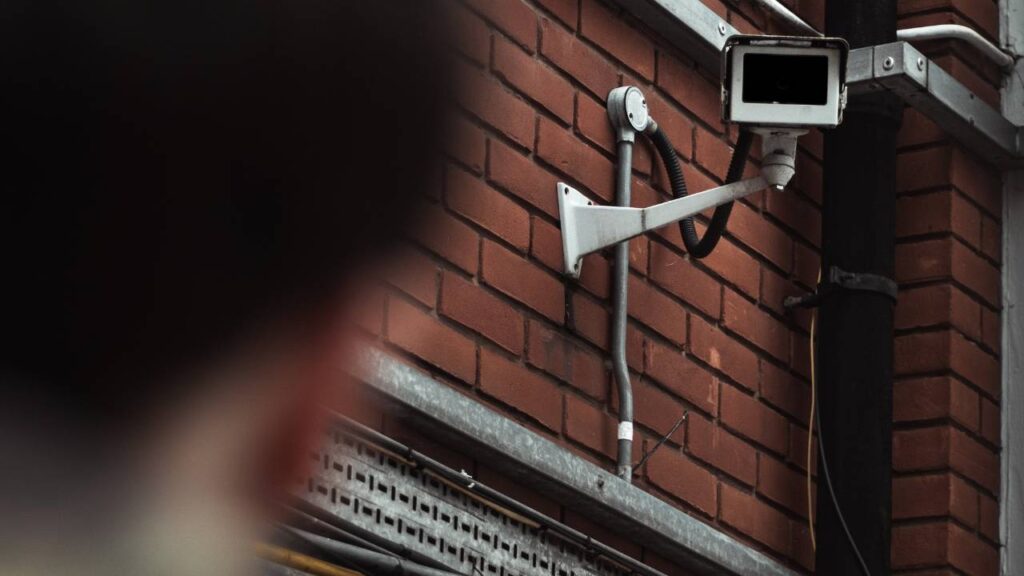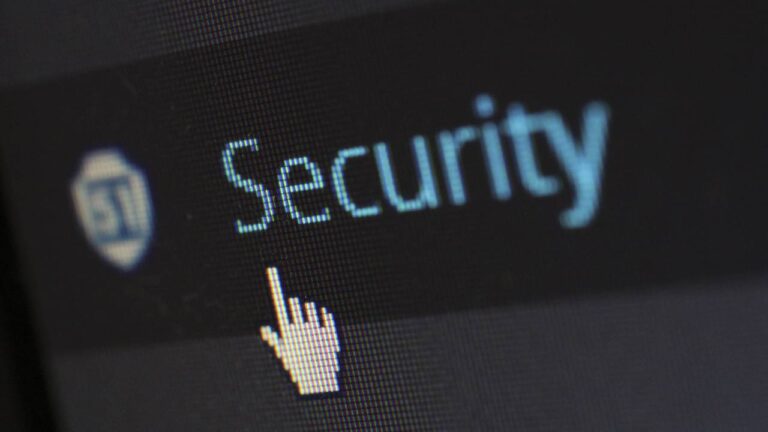In today’s rapidly evolving business landscape, ensuring the safety and security of your organisation is of paramount importance. The increasing reliance on technology has opened the door to new forms of threats, but it has also provided innovative solutions to keep businesses secure. As a modern company owner or manager, it is crucial to assess potential risks and come up with a security blueprint for your business in order to safeguard its assets, employees, and reputation.
To successfully tackle corporate security challenges in the modern era, it’s essential to stay informed about emerging trends and best practices in this field. This guide aims to provide you with valuable insights on modern business security measures and assist you in developing a resilient defence strategy tailored to your organisation’s unique needs.
Understanding the Importance of Safety

Ensuring the safety of your employees should be a top priority for any organisation. In today’s fast-paced business world, there are numerous threats to both digital and physical security. Taking steps to protect your employees, infrastructure, and sensitive information is not only crucial to the well-being and integrity of your organisation, but also crucial to employee wellness and workplace wellness.
Proper safety measures can have a significant impact on the productivity and longevity of your operation. By creating a secure environment, you foster a sense of trust between employees and management, allowing them to focus on their work without worrying about potential risks. Wired intercom systems, for instance, can be an effective way to maintain secure communication within your building and reduce the likelihood of unauthorised access.
The well-being of your staff extends beyond physical safety. Ensuring a strong digital security framework will help protect your employees from identity theft and personal data breaches. Additionally, such a framework can prevent the loss of valuable company information that could put your organisation at a competitive disadvantage.
In constructing a modern business security plan, several crucial areas merit particular attention. First, the installation of access control systems, surveillance cameras, and alarm systems are fundamental in deterring potential intruders, and it’s essential to regularly maintain these systems to ensure their reliability and effectiveness. Equally important is the digital realm; implementing a robust firewall, keeping antivirus systems up-to-date, and enforcing strict password policies can provide a bulwark against cyber threats.
Additionally, ensuring that employees receive proper training in both safety protocols and cybersecurity best practices is paramount, as this knowledge equips them to make informed decisions about their own safety and that of the organisation. Lastly, being prepared for emergencies is vital. This involves having a thorough emergency plan that outlines escape routes, specifies safe areas, and includes a communication system to keep employees informed during crises.
Identifying and Managing Threats
In today’s rapidly evolving world, threats to your business can come in various forms – whether it be physical, digital, or even unforeseen pandemics like COVID-19. Identifying and managing these threats creates a strong foundation for your organisation’s security.
To begin with, assess your organisation’s vulnerabilities. By cataloguing the weak points in your infrastructure, both physical and digital, you can have a clear vision of where to focus your security efforts. Consider factors such as data storage, remote work systems, and building access.
After understanding your vulnerabilities, assign a risk score to each threat. This process helps you prioritise which areas need immediate attention. A higher risk score indicates a higher likelihood of a potential threat. For instance, a breach in your data storage system might receive a higher risk score than an unsecured entry to your office premises.
Proactively managing threats also involves staying informed on the latest developments in global security. This includes monitoring pandemic-related updates (like COVID-19) and implementing necessary changes, such as remote work policies, to maintain safety and keep your business running.
Regular audits and evaluations are essential to maintain resilience. This should cover all aspects of security, ranging from testing the strength of your passwords to ensuring your physical premises are secure. By conducting audits, you can identify and address any gaps to strengthen your overall security.
Ensuring Compliance and Quality

It is essential for your business to maintain a strong focus on compliance and quality. Regulatory compliance ensures that your organisation adheres to the rules and guidelines set forth by relevant authorities, while a focus on quality ensures that all security measures are effectively protecting your employees and assets.
To achieve compliance, you must be aware of the safety regulations that apply to your industry. This knowledge will allow you to implement safety procedures that meet or exceed the required standards, and ensure employee safety at all times. You can consult with industry experts or regulatory bodies to gain a better understanding of the specific regulations that apply to your business.
In addition to adhering to regulatory compliance, it’s important to establish a culture of safety within your organisation. This begins with having a clear and well-documented safety policy, outlining the expectations and responsibilities of all employees. You may consider conducting regular safety surveys, providing an opportunity for employees to express their concerns and suggest improvements. This will help to further enhance your organisation’s commitment to safety.
To maintain high quality in your safety measures, consider conducting periodic audits and assessments. This will allow you to identify areas for improvement, ensuring that all policies and procedures remain relevant and up to date. You may also wish to invest in employee training, ensuring that all staff members are fully informed of the risks they may encounter and the appropriate protocols to follow.
Building a Safety Culture
To prioritise safety in your business, it’s vital to establish a strong safety culture. A solid safety culture will ensure that all employees put safety first, resulting in a safer workplace and reduced risk of workplace injuries.
Begin by setting clear safety expectations and guidelines for all staff. This includes producing a comprehensive health and safety policy and ensuring everyone understands their responsibilities. Regularly review and update your safety procedures to keep them up to date with changing environments and risks. When incidents do occur, investigate and learn from them to improve your processes and prevent future accidents.
Effective communication is crucial in fostering a safety culture. Encourage open dialogue about workplace safety and make it easy for employees to report hazards or near-misses. This can be achieved through regular safety meetings, suggestion boxes, and anonymous reporting systems. Ensure that all employees are well informed about safety procedures and any changes to them.
Provide ongoing training and education for your staff. Equip employees with the necessary skills and knowledge to work safely and handle emergencies. Training should be tailored to your specific industry and workplace. By investing in your employees’ safety education, you empower them to contribute to a safer workplace.
Recognise and celebrate successes in workplace safety. Acknowledge and reward teams and individuals who demonstrate a commitment to safety and who help to reduce workplace injuries. This can be as simple as a verbal recognition, or more formalised incentivised programs.
Finally, lead by example. Ensure that senior management and supervisors are actively promoting and adhering to safety procedures. When your staff see that their leaders prioritise safety, they are more likely to adopt a safety-first mindset themselves.
Improving Security with Technology

In today’s world, businesses must prioritise safety and security. As a business owner, you must consider incorporating modern security technologies to adequately protect your assets and employees. One of the pivotal advancements in this domain has been implementing artificial intelligence solutions, which can help in predicting and detecting anomalies in real-time, thus enhancing your security measures.
Employing surveillance systems, like closed-circuit television (CCTV), serves as a robust deterrent against potential threats. With CCTV, you can monitor various parts of your premises in real-time, both inside and out. This monitoring not only aids in identifying suspicious activities but also ensures prompt response when incidents occur.
Another significant advancement is the automation of security systems, enhancing both efficiency and effectiveness. Automated systems grant the ability to control various elements, from lighting to locking mechanisms, either remotely or on a predetermined schedule, reducing human error possibilities and streamlining processes for a safer business environment.
Furthermore, the traditional lock-and-key methods are now being superseded by more secure access control systems. By adopting electronic or biometric access points, businesses can effectively limit entry to sensitive areas, mitigating unauthorized access risks. Monitoring access logs within these systems also provides insight into staff movements, helping identify potential threats.
Safeguarding the Enterprise
A key aspect of modern business security is safeguarding the enterprise against potential threats. As a business owner, you have a responsibility to ensure the safety of your clients, maintain your productivity levels, and protect the valuation of your company.
Firstly, securing your clients’ data is of paramount importance. Implement a robust confidentiality protocol, including encryption for sensitive information and regular password resets for access control. This not only preserves your clients’ trust but also minimises the risk of data breaches that could jeopardise your enterprise’s reputation.
Secondly, productivity is crucial to your company’s success. Invest in proactive maintenance of your IT infrastructure to prevent downtime and streamline daily operations. This may involve deploying firewalls, updating software, and monitoring for unusual network activity. Remember, a secure and efficient system equates to a more productive workforce and ultimately, a higher valuation.
Creating a Comprehensive Safety Plan
A well-crafted safety plan is essential for modern businesses to ensure your employees and company property remain protected. The pillars of a safe business environment are built on thorough risk assessments, clear policies, regular training, and the right tools and equipment. In order to construct an effective plan, you should take the following steps:
Firstly, conduct a thorough risk assessment to identify all potential hazards and threats. This process helps you to understand the vulnerabilities within your business environment, allowing you to plan for potential incidents. Pay close attention to areas such as fire risks, data security, and health and safety issues.
Next, establish clear health and safety policies for your employees to follow. This should include guidelines on workplace conduct, appropriate usage of equipment, and steps to take in case of an emergency. Training your staff is equally important to ensure that everyone knows what to do should a crisis occur.
To enhance your safety program even further, it is important to invest in appropriate tools and equipment. This may include fire extinguishers, first aid kits, secure storage for hazardous materials, and up-to-date safety gear for employees.
Regularly review and evaluate your safety plan to make improvements as needed. This involves assessing the effectiveness of your strategies, identifying any new risks that have emerged, and ensuring that your policies remain relevant. It is crucial to stay informed about evolving industry regulations and standards to ensure your safety program remains compliant and up to date.
Conclusion
In an era where the business landscape is ever-shifting, the importance of prioritising safety and security cannot be overstated. Modern enterprises are presented with multifaceted challenges, from cyber threats to physical vulnerabilities.
A robust approach to business security, blending both traditional and technological methods, is no longer just an option—it’s an imperative. As businesses evolve and grow, so must their security strategies, and understanding this dynamic can be the difference between prosperity and vulnerability.
Ultimately, a secure business environment fosters trust, productivity, and resilience, all of which culminate in the continued success and reputation of the organisation. As stewards of our businesses, we must remain vigilant, proactive, and adaptive, ensuring that safety remains at the heart of all we do.
